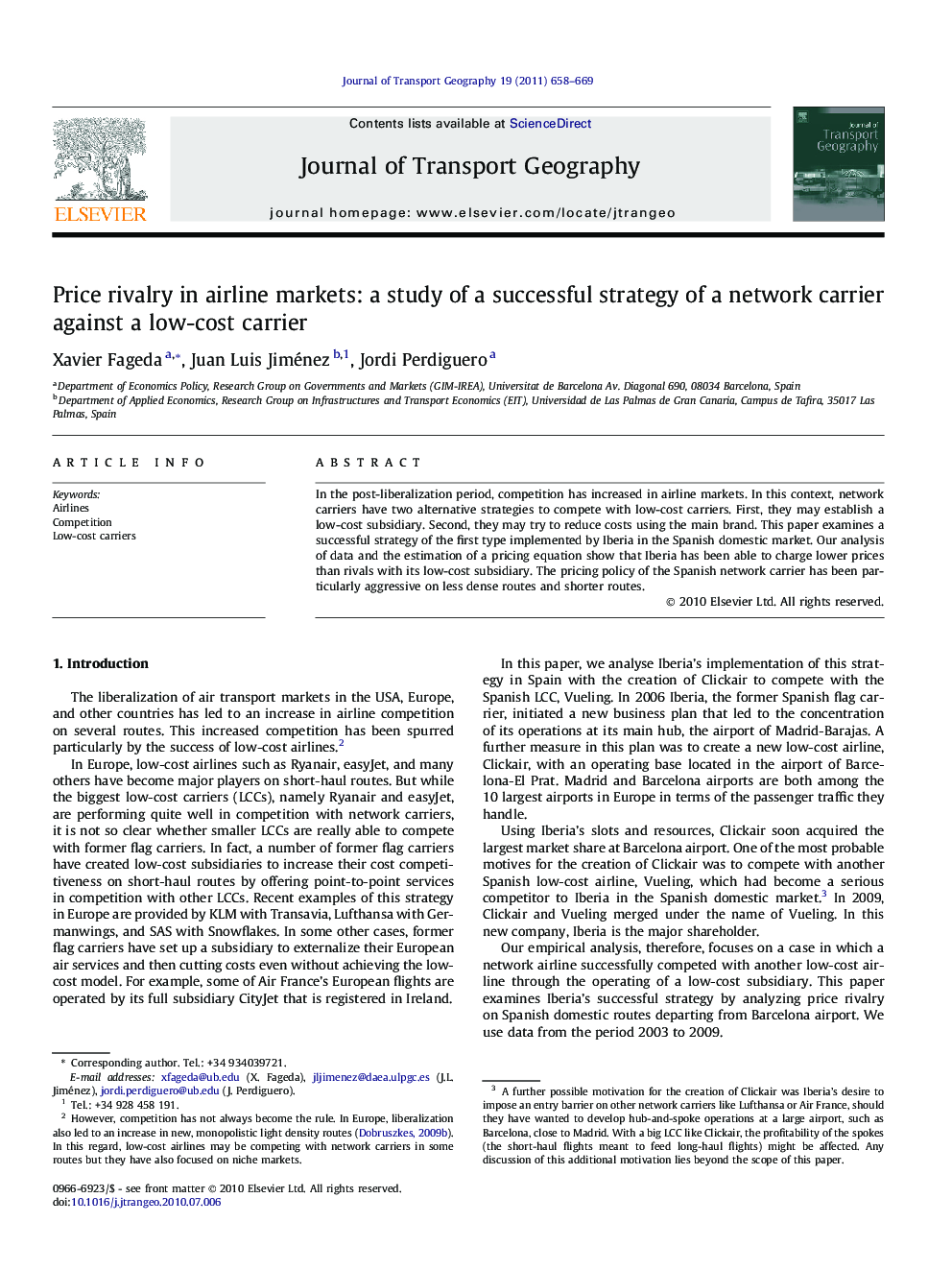| Article ID | Journal | Published Year | Pages | File Type |
|---|---|---|---|---|
| 1059499 | Journal of Transport Geography | 2011 | 12 Pages |
In the post-liberalization period, competition has increased in airline markets. In this context, network carriers have two alternative strategies to compete with low-cost carriers. First, they may establish a low-cost subsidiary. Second, they may try to reduce costs using the main brand. This paper examines a successful strategy of the first type implemented by Iberia in the Spanish domestic market. Our analysis of data and the estimation of a pricing equation show that Iberia has been able to charge lower prices than rivals with its low-cost subsidiary. The pricing policy of the Spanish network carrier has been particularly aggressive on less dense routes and shorter routes.
Research highlights► The network carrier may reduce prices substantially with a low-cost subsidiary. ► The network carrier charges lower prices when it has a higher share on the route ► The pricing policy is more aggressive on short-haul and thin routes. ► On the short term, passengers may have benefited from the price rivalry ► On the long term, the elimination of a serious competitor may harm passengers
